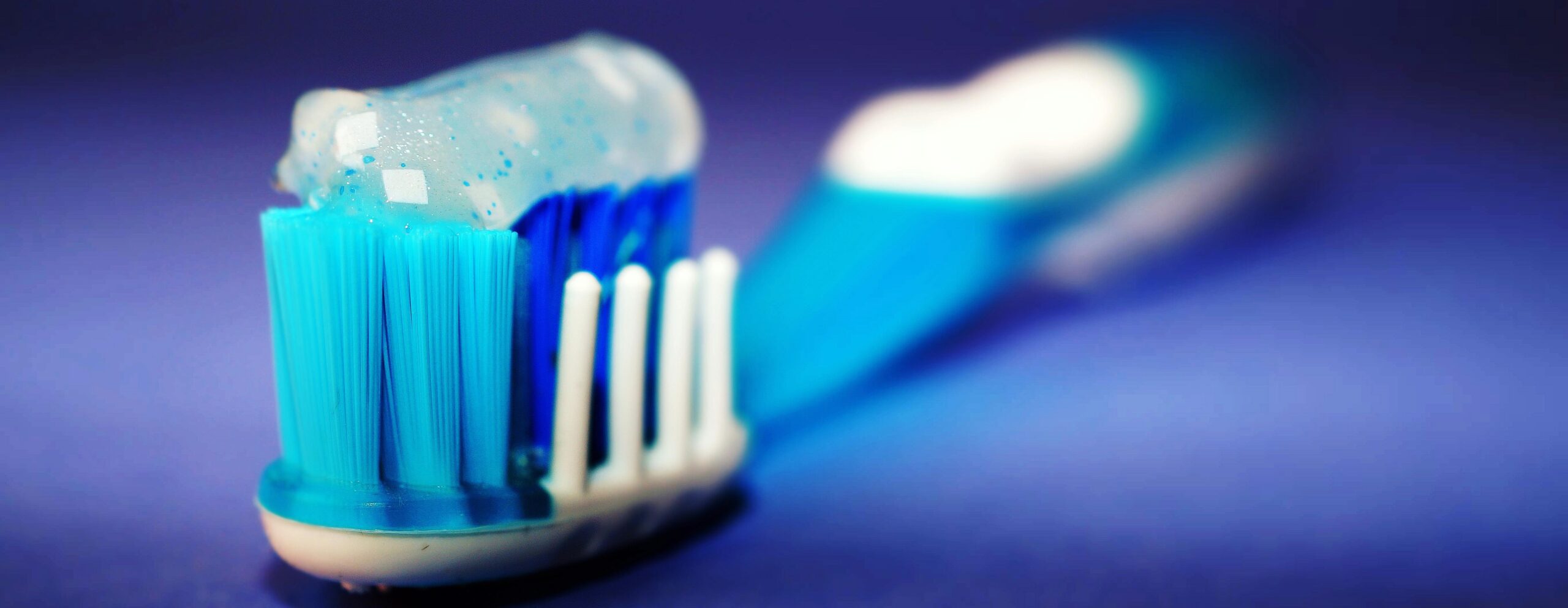
02 Oct How Often Should You Replace Your Toothbrush?
Daily toothbrushing is the single most important step in any dental routine. Even with good technique, however, the wrong brush can worsen dental issues.
Brushing your teeth with an old toothbrush is like trying to clean your house with dirty rags. Your results will only be as good as the tools you use, so if you want perfect teeth, you need to replace your toothbrush.
Why It’s Important to Replace Your Toothbrush
Imagine the feeling of freshly brushed teeth, all shiny and clean. All the bacteria and leftover food has been polished away, leaving your mouth sparkling. But what happens to the germs and food particles? Rinsing might remove some bacteria, but many can hang on to your toothbrush bristles. The next time you brush your teeth, you might think you’re removing bacteria, but you’re also reintroducing bacteria into your mouth!
Toothbrushes clean through targeted abrasion. Shorter bristles gently buff away surface stains and longer bristles remove food particles. As time goes by, wear and tear starts to affect the brush. Over time, bristles bend or fray, and lose their effectiveness. Furthermore, your toothbrush not only becomes less effective but endangers your oral health. Brushes accumulate dust, bacteria, and residue, which can lead to infection.
Consequences of Not Replacing Your Toothbrush Regularly
Bad Breath and Gum Disease
Nobody wants bad breath, or worse, gum disease. Yet even if you brush your teeth consistently, using an old toothbrush might cause bad breath. If the brush you use is secretly harboring food and bacteria, then all your work is merely spreading bacteria around. Furthermore, aggressively brushing bacteria into your gums is an easy way to get gum disease. Gum disease is common among Americans and can lead to tooth extraction. If you want to prevent your gum tissue from getting infected, you need to make sure your toothbrush is clean. It’s far easier to buy a new toothbrush than it is to endure decaying gum tissue and endless dental visits. In regards to cost, treating a cavity is much more expensive than buying a new toothbrush.
Ineffective Cleansing
We all know that brushing our teeth will help prevent cavities, but most of us don’t consider that an old brush can render brushing ineffective. One group of researchers evaluated plaque buildup on toothbrushes. They found that in 2 months, there was minimal plaque buildup on the participant’s toothbrushes. After 70 days had passed, issues arose. 3 months after the beginning of the study, there was significant plaque buildup. This shows that after 3 months, toothbrushes start to lose efficiency. When plaque builds up on teeth, it causes cavities. Even with a perfect brushing technique, plaque can still accumulate if you don’t change your toothbrush regularly.
But what if you have an electric toothbrush? What if you clean your brush regularly? Or if your brush looks like it’s in decent shape? Is it okay to keep using an old toothbrush, or are you putting your dental health in jeopardy? Let’s examine the dentist’s answers to these questions.
The Standard Recommendation
How often you’ll need to buy a new toothbrush depends on two factors: lifestyle and usage. In addition to this, some toothbrush brands or styles may be more durable than other types. So when should you replace your toothbrush?
According to the American Dental Association, you should replace your toothbrush every 3 to 4 months. During this period, you should be inspecting your toothbrush to check for signs of wear. This is the best way to determine whether you need to replace it soon.
Wear and Tear
While it’s a good idea to stick to the ADA’s recommendation, your situation might be more complex. Some research shows that there might be more facets than merely how old a toothbrush is. Physical signs of wear on your brush clearly show that a toothbrush is near the end of its life.
There are further questions to be considered, such as the way that you utilize your toothbrush. Do you brush your teeth gently or aggressively? If you brush your teeth gently then it’s likely that your toothbrush will not wear out as fast. On the other hand, those who brush their teeth with great zeal are harming their dental health in the long run. Their toothbrushes will wear out faster, and they may be putting themselves at risk for diseases. Aggressive brushing has two major adverse effects: it causes microtears in gum tissue and permanently erodes tooth enamel. If you tend to use great force when you brush your teeth, then you’re damaging not only your dental health but also your toothbrush.
When the brushes’ bristles start to lose their stiffness, then your toothbrush has lost its efficiency. The purpose of those bristles is to brush aside the plaque and food coating your teeth. Research indicates that toothbrushes with worn-down bristles remove plaque less effectively.
Sickness
If you are seriously sick, or have a bacterial infection, toss your toothbrush after you start to feel better. Often, trapped bacteria remains on your toothbrush, and you don’t want to risk getting sick again. This is especially important for children, as immune responses may vary.
ADA Approved?
What should you do if your brush shows excessive wear before three months have passed? After ruling out aggressive brushing, check for the ADA seal. Your toothbrush should have the American Dental Association seal of approval, which confirms that researchers have tested it for durability.
After checking for ADA approval, check what brush type you have. Some bristle types wear out faster than others. Soft-bristled toothbrushes may wear out faster, however, they may be the best option. Some dental professionals recommend softer toothbrushes because they have less potential for damage. Hard-bristled toothbrushes may be the best at removing food debris and plaque but unless impeccable technique is used, they may do more harm than good. Harsher bristles can do serious damage to your gums, especially when used with an abrasive toothpaste.
Manual vs. Electric
When used properly, electric toothbrushes may offer a deeper clean. Because of their quick rotation, they have a different shape than a manual toothbrush. One difference is bristle length: the average electric toothbrush has significantly shorter bristles. This means that they have less elasticity, and this can cause bristles to become splayed sooner. If you have an electric toothbrush, check it regularly for signs of wear, and consider replacing it more often. The ADA’s recommendation of three months may be too long, as many electric toothbrush users find they need to replace the head of their toothbrush every two months.
Children’s Toothbrushes
Kids may need to replace their toothbrushes more frequently than adults. One of these reasons is that toothbrushes made for children tend to have softer bristles and softer bristles wear out faster. A further consideration is sensitivity. Small children’s gums may become irritated more easily, meaning that an old toothbrush can cause serious damage. And because their mouths are still developing and growing, infection can pose a serious risk.
Older children may also need replacements faster but for different reasons. If your child wears braces, then their toothbrush experiences significantly more damage. The difference between enamel and steel is the difference between an effective toothbrush and a damaged one. You may need to replace your teen’s toothbrush every two months. Braces also make thorough brushing more difficult. Because the braces will wear down bristles faster, it’s important to make sure the bristles are still rigid enough to reach between braces and the tooth’s surfaces. Serious cavities can result if your child does not brush thoroughly while wearing braces, so make sure they have the right tools by replacing their toothbrush often.
Maintaining Your Toothbrush Between Replacements
If replacing your toothbrush every three months sounds exhausting, you have a few options to prolong its life. If you clean and store it properly, you can minimize bacteria buildup and wear.
Storing Your Toothbrush
Your mouth isn’t the only source of bacteria on your toothbrush! Bathrooms are full of germs, so where you store your toothbrush is crucial. Bacteria survives on toothbrushes for up to a week, meaning that dirty countertops or hands risk your dental and general health. To prevent infection, store your toothbrushes in an open container. Never put your toothbrush in a closed case, as access to air prevents the growth of mold or bacteria.
How to clean a toothbrush
Whatever kind of toothbrush you use, it’s important to keep it germ-free. After every use, you should wash your toothbrush. Run it under hot water, using your fingers to clean between the bristles, and check that no food or toothpaste remains. Shake it dry before placing it back in its holder. In addition to this, experts recommend soaking the brush in hydrogen peroxide, boiling water, or antibacterial mouthwash. A 2022 study shows that soaking toothbrushes for 20 minutes in Listerine had significantly less bacteria residue.
Conclusion
At the end of the day, no matter how clean you keep your toothbrushes, they eventually wear out. One practical option is to mark your calendar or toothbrush with the date it should be replaced. Your toothbrush is the most foundational tool in your dental care routine and should be valued as such. Go check your current toothbrush for signs of wear, and purchase a new one today!
Augusta Family Dental is your home for dental advice that fits both your long-term and everyday needs. Schedule an appointment with us today!

About Our Team
Our team of dental experts has well over 30 years of combined experience in the field of dentistry. To learn more about them, please visit the team pages for Hephzibah, Washington Road, Summerville, and Medical District locations.

Sorry, the comment form is closed at this time.